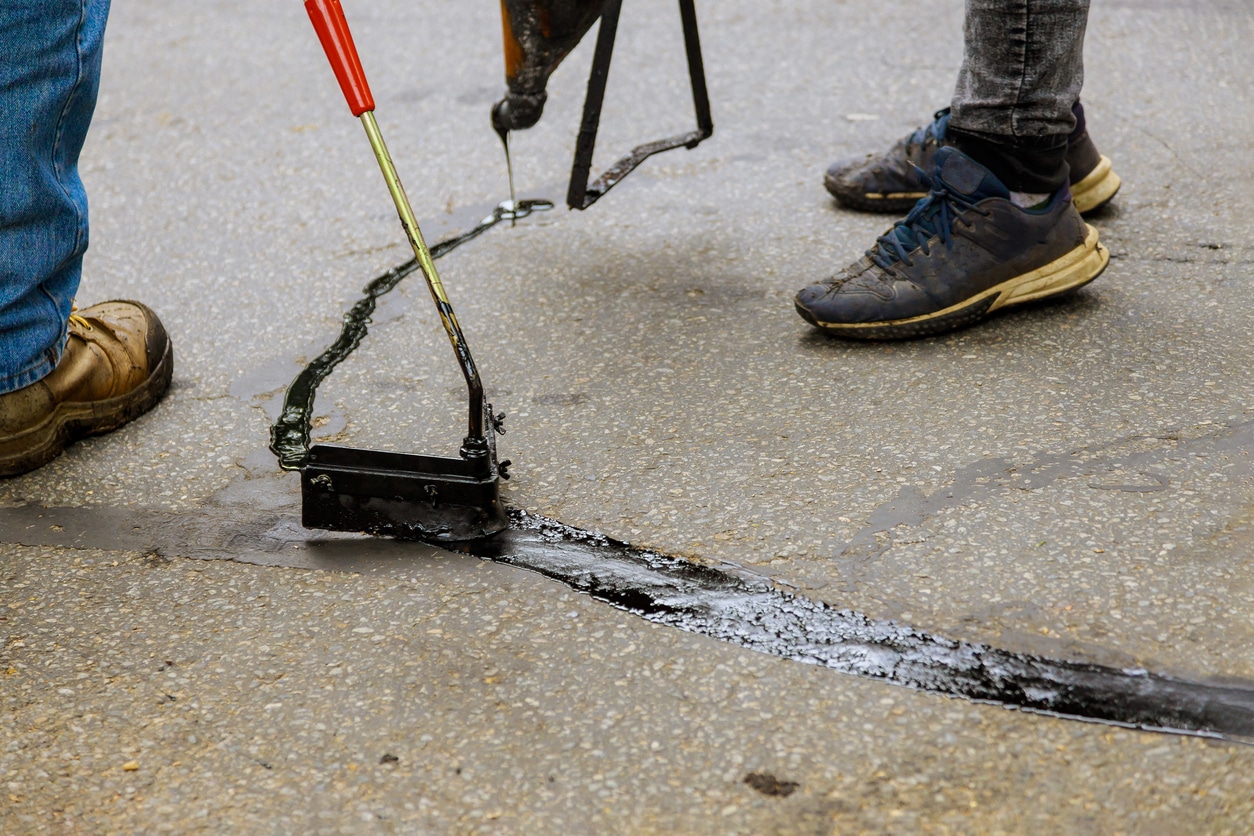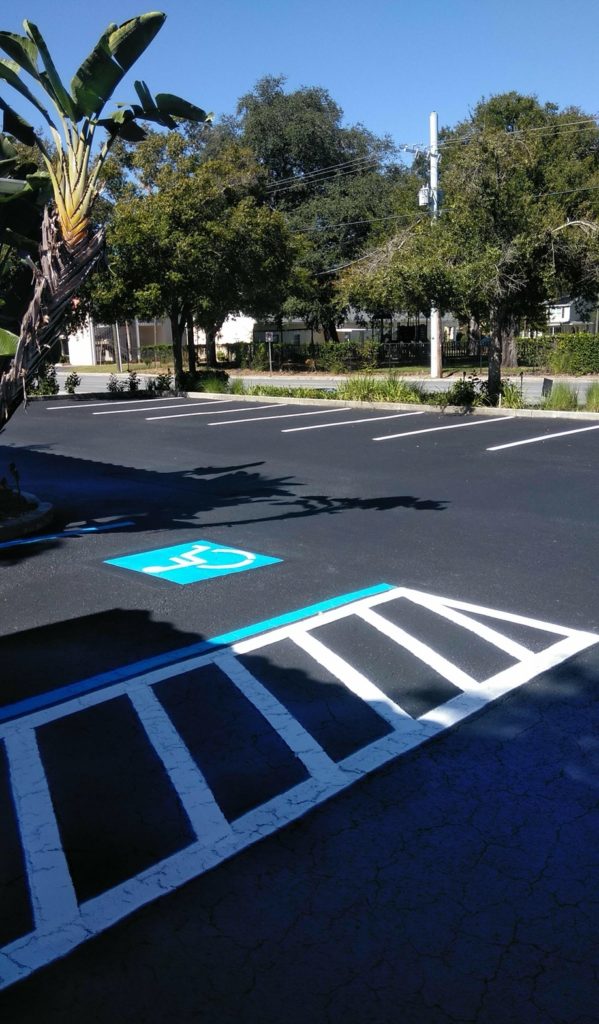Warm Mix Asphalt: A Sustainable Option for Sidewalk
Warm Mix Asphalt (HMA) has become a leading sustainable option for pavement options, offering a myriad of ecological advantages and cutting-edge modern technologies. Its capability to decrease and recycle materials energy consumption offers a compelling instance for its adoption in roadway construction tasks. Furthermore, the lasting efficiency and sturdiness of HMA make it a recommended choice for framework development. As the need for eco-friendly building and construction methods grows, checking out the subtleties of HMA's sustainability can provide important insights into the future of sidewalk services.
Environmental Advantages of Warm Mix Asphalt

Additionally, Warm Mix Asphalt assists to alleviate city warm island results. Its dark color soaks up sunlight, lowering the amount of warm reflected back into the ambience compared to lighter-colored sidewalks. This can reduce ambient temperature levels in metropolitan locations, lowering the demand for a/c and ultimately reducing power intake.
Furthermore, Hot Mix Asphalt adds to boosted stormwater monitoring. Its porous nature enables water to recharge and penetrate the pavement groundwater supplies, minimizing overflow and the danger of flooding. These ecological benefits make Warm Mix Asphalt a sustainable selection for leading freeways and roadways.
Energy Performance in HMA Production
Is power performance an essential variable in the production of Hot Mix Asphalt (HMA)? Power plays a significant role in the manufacturing of HMA, influencing both cost and ecological sustainability. One vital facet of energy efficiency in HMA production is the use of cozy mix asphalt (WMA) innovations.
Additionally, developments in plant technologies have actually resulted in more energy-efficient HMA manufacturing processes. Modern plants are made with functions like recycled asphalt pavement (RAP) handling capacities, effective burner systems, and boosted insulation, all adding to energy financial savings. By maximizing energy usage in HMA manufacturing, the sector can lower its carbon footprint while keeping high-quality pavement products. Energy efficiency is, therefore, a vital consideration in guaranteeing the sustainability of Hot Mix Asphalt manufacturing.
Recyclability of Warm Mix Asphalt
The recyclability of Warm Mix Asphalt (HMA) is a pivotal aspect of its sustainability and long-lasting environmental impact. HMA is one of the most recycled materials in the USA, with over 100 million lots of recovered asphalt sidewalk (RAP) being recycled annually in new pavement building and construction. Recycling HMA provides numerous ecological benefits, such as decreasing the requirement for virgin products, lowering energy consumption during production, and reducing the quantity of waste sent out to land fills.
The process of recycling HMA includes grating the existing sidewalk, squashing it right into smaller sized pieces, and mixing it with new aggregate and asphalt binder to create a recycled mix. This recycled mix can typically do along with or even much better than standard HMA, while requiring less raw materials and creating reduced greenhouse gas discharges. By integrating RAP right into brand-new sidewalk projects, road companies can preserve natural deposits, reduce expenses, and reduce the environmental footprint of road building and maintenance activities. In general, the recyclability of HMA plays a considerable function in promoting check it out lasting techniques within the sidewalk market.

Long-Term Efficiency of HMA
Asphalt sidewalks show durability and resilience over an extended period, reflecting the long-lasting performance of Hot Mix Asphalt (HMA) The durability of HMA can be credited to its capability to stand up to rush hour lots, rough weather, and the results of aging. Researches have actually shown that well-designed and correctly constructed HMA pavements can last for 20 years or even more with regular maintenance. The trick to taking full advantage of the long-lasting performance of HMA depends on using top quality materials, adhering to ideal methods in building, and executing effective upkeep approaches. Appropriate drain, routine inspections, and prompt repair services are crucial for maintaining the structural stability of HMA pavements over time. Additionally, advancements in HMA modern technology, such as the usage of polymer-modified binders and cozy mix asphalt, have actually additionally boosted the durability and longevity of HMA sidewalks. By focusing on high quality construction and maintenance practices, HMA remains to confirm itself as a affordable and sustainable remedy for durable sidewalk infrastructure.

HMA: Resilience and Sustainability
Showing both toughness and sustainability, Hot Mix Asphalt (HMA) has actually become a keystone in the building of long-lasting sidewalk facilities - commercial parking lot paving. HMA's longevity comes from its capacity to stand up to heavy tons, harsh weather, and high website traffic quantities, making it a dependable selection for roadways, freeways, and airport paths. The make-up of HMA, which normally consists of aggregates, binder, and filler, plays a crucial duty in enhancing its durability and resistance to tear and wear
Additionally, HMA's sustainability hinges on its recyclability and energy-efficient manufacturing procedure. The ability to reuse reclaimed asphalt sidewalk (RAP) in brand-new HMA mixtures decreases the need for virgin products and minimizes the environmental influence of sidewalk construction and maintenance. Furthermore, the power efficiency of producing HMA depends on its reduced blending temperature levels compared to other pavement materials, causing lowered power consumption and greenhouse gas emissions.
Final Thought
In final thought, warm mix asphalt (HMA) offers a sustainable service for sidewalk with its eco-friendly characteristics. HMA's recyclability, energy performance in production, and lasting resilience make it an environment-friendly option for roadway building. By saving natural deposits, decreasing waste, and lowering greenhouse gas emissions, HMA plays an essential role in advertising sustainability in framework growth. Its ability to mitigate urban warmth island results additionally highlights its significance in creating ecologically conscious and resistant sidewalk systems.
Check This Out
HMA is one of the most recycled materials in the United States, with over 100 million loads of redeemed asphalt sidewalk (RAP) being reused each year in new pavement construction.The procedure of recycling HMA entails grating the existing pavement, crushing it into smaller sized pieces, and blending it with new accumulation and asphalt binder to produce a recycled mix.Asphalt pavements show toughness and durability over an extended duration, showing the lasting efficiency of Hot Mix Asphalt (HMA) In addition, developments in HMA technology, such as the usage of polymer-modified binders and cozy mix site here asphalt, have actually additionally enhanced the durability and long life of HMA pavements. The capacity to reuse reclaimed asphalt pavement (RAP) in brand-new HMA mixtures minimizes the demand for virgin products and reduces the ecological impact of sidewalk building and upkeep.